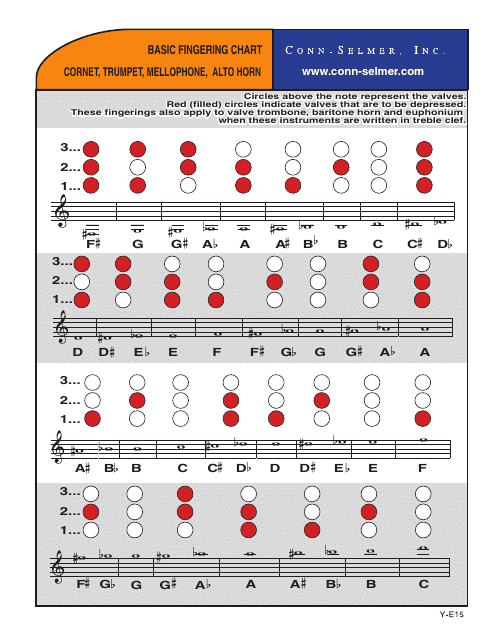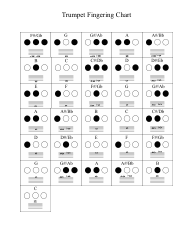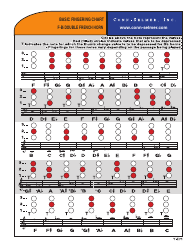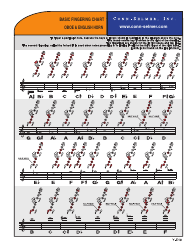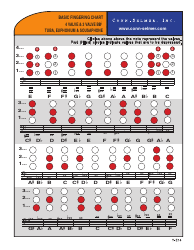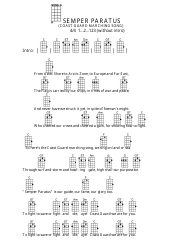Basic Fingering Chart for Cornet, Trumpet, Mellophone, Alto Horn
The Basic Fingering Chart for Cornet, Trumpet, Mellophone, and Alto Horn is a visual guide that shows players how to position their fingers on the instrument's valves to produce different notes. It helps musicians learn and play the correct fingerings for each note on these brass instruments.
FAQ
Q: What is a fingering chart?
A: A fingering chart is a visual representation of the finger positions needed to produce specific notes on a musical instrument.
Q: What is a cornet?
A: A cornet is a brass instrument similar to a trumpet, but with a mellower sound and a slightly conical bore.
Q: What is a trumpet?
A: A trumpet is a brass instrument with a cylindrical bore and a bright, piercing sound.
Q: What is a mellophone?
A: A mellophone is a brass instrument that looks like a hybrid between a trumpet and a French horn. It is commonly used in marching bands.
Q: What is an alto horn?
A: An alto horn is a brass instrument that is smaller than a euphonium but larger than a trumpet. It has a mellow tone and is often used in brass bands.
Q: What is a brass instrument?
A: A brass instrument is a musical instrument made of brass or other metals, typically played by buzzing the lips into a cup-shaped mouthpiece.
Q: Why is a fingering chart important?
A: A fingering chart helps musicians learn the correct finger positions for each note, enabling them to play the desired pitch accurately.
Q: Are the fingerings the same for all brass instruments?
A: No, fingerings can vary slightly between different brass instruments. It is important to consult a specific fingering chart for the instrument you are playing.
